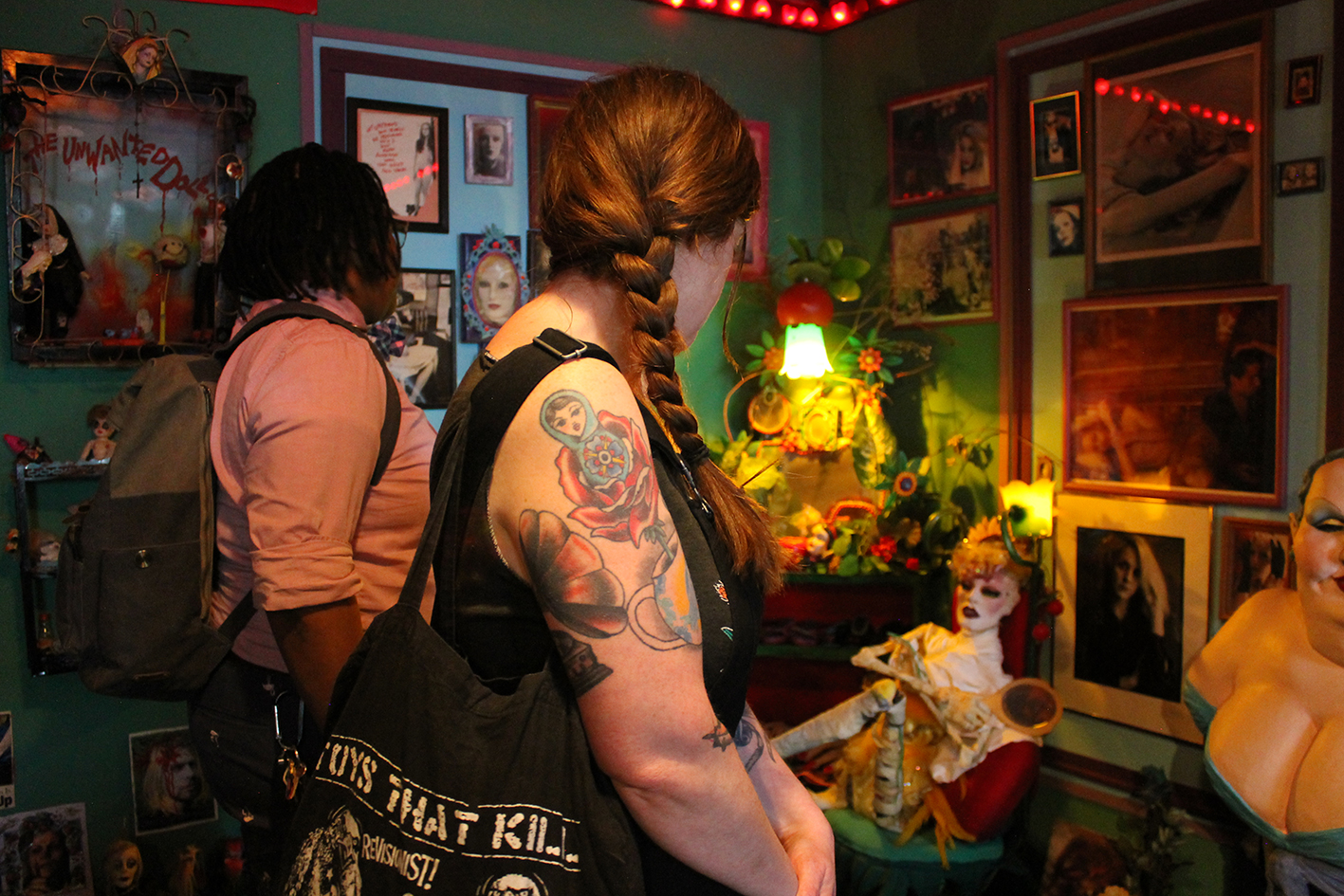Author: David Givens, PhD student in the Department of Religious Studies and Making Advances Workshop participant
A primary goal of the 2018 Collecting Knowledge Pittsburgh: Making Advances workshop was to help participants appreciate and connect historic materials related to sex, sexuality, and gender identity with challenges individuals and society currently face around these issues. Visual representation is a powerful means of exploring identity, belonging, and desire within complex social systems of meaning; my participation in this workshop has greatly enhanced my capacity to connect these systems and narratives within the evolving struggles that sexual and gender minorities continue to confront. The museums, archives, and libraries we explored throughout Pittsburgh curated representations of visual politics, material embodiment, and the power of sexual and gender expression in ways that will continue to influence my own research and writing .
My initial interest in this workshop stemmed from its confluence with my own dissertation research. For the past several years, I have explored the ways people seek to understand aspects of their identities online as both spiritual and LGBTQ-identified individuals and communities . The complex signifiers frequently referenced by online actors include the traditions of saints combined with the fluidity inherent in contemporary understandings of gender and sexuality. This overlap between my research and the objectives of the workshop fostered additional perspectives on, and critical distance for, issues of representation and visibility over time, including the ways that images are utilized to create and maintain narratives that shape, explain, or defend aspects of personal and group identity.
A prime example of the workshop’s enrichment of my work on the evolution of LGBTQIA artistic and symbolic representation was the Greer Lankton exhibit and archive at the Mattress Factory; specifically, the recreation of her Chicago apartment, It’s all about ME, not you (2009). The space was anchored around a series of three personal shrines to the most important role models in Lankton’s life: Candy Darling, Patti Smith, and Jesus. The latter was comprised of traditional Catholic images of Jesus, Mary, and a few female saints, but the central image of Jesus had been altered to accentuate the fullness of his lips and suggest lipstick; other images of Jesus were superimposed with stylized representations of the artist herself. Lankton’s playing with the gendered representation of Jesus in what would be read as traditional, holy portraits creates powerful statements on the transmutability of gender expression and identity, questioning the role of physical bodies and their characteristics (or others’ perceptions thereof) in maintaining and articulating one’s sense of self. It is also a striking combination of religious and camp imagery; portraying a genderqueer Jesus with lipstick, or the stylized face of the artist herself combined with images of Jesus, offers an interpretation of the relationship between self and the divine that is at once a subversive political expression and a clear representation of a larger ontological narrative.
Serious playfulness with religious imagery is hardly unique to Lankton, and immersion in her work has opened new avenues of exploration in my dissertation research: for instance, how subjects in digital communities are engaging saint imagery or figures from classical works to construct new narratives that speak to contemporary LGBTQIA experiences. Moreover, Lankton has inspired me to identify and assess online postings of home shrines to “queer saints” (and some “Gay Gods”) in my work as well.
Many people with whom I’ve discussed my research express surprise that subjects are creating narratives and images online in which saints speak to LGBTQIA experience. Personally, I don’t find it surprising. I see the ongoing influences—both for better and for worse—of religion and spirituality throughout American society, including within this workshop. At the Frick Fine Arts Library Special Collections I noticed parallels between the (nonreligious) zines created by lesbian and queer authors/designers and the digital spaces I research; their political, cultural, and sexual expressions reflect some of the same sentiments I now study in communities online. Zines physically manifest the democratization and expansion of queer free speech, untethered from traditional publication constraints and institutionalized censorship. Seeing these contemporary underground materials, many predating the Internet, has supported my own inclusion of “in-between” precursor narratives for saints, most notably the semi-underground following surrounding Judy Garland during the 1950s and 60s.
Echoes of religious thought ran deep through the images and narratives of the workshop, including connections between time and place for representations of embodiment—of physicality-as-sexuality. Seated mostly-nude male spreads of the 1950s (for health and fitness, of course) in Hillman Special Collections juxtaposed strikingly with 16th century images of the seated, risen Christ with a barely concealed erection in the Falk Library Rare Books Collection. This illustrated to me the power of the sexualized gaze in all its contexts.
In the University Library Archives Service Center we saw documents describing how women’s religious organizations organized home care ; in the Detre Library and Archives at the Heinz History Center, there were numerous records of religious groups supporting the early work of the Pittsburgh AIDS Taskforce. In the Andy Warhol museum, a small display about Warhol’s family discussed the artist’s deep and lifelong commitment to Roman Catholicism. In Deana Lawson’s exhibit in the Forum Gallery at the Carnegie Museum, I couldn’t help but notice the crosses subtly worn by nearly every single subject.
My point in highlighting these details is to demonstrate how my own thinking about these multifaceted topics has been expanded. These collections have helped me connect in more nuanced ways to the complex and sensitive interactions that occur among expressions of sexuality and gender identity, and various roles that religious institutions and individuals beliefs can play in those spaces . This workshop demonstrated tangible ways our society has advanced LGBTQIA discourse and representation over time—as well as ways it has not. And alongside those developments, it is clear that religion and spirituality continue to play both outsized and subtle roles as well.
Learn more about the Making Advances Workshop here

